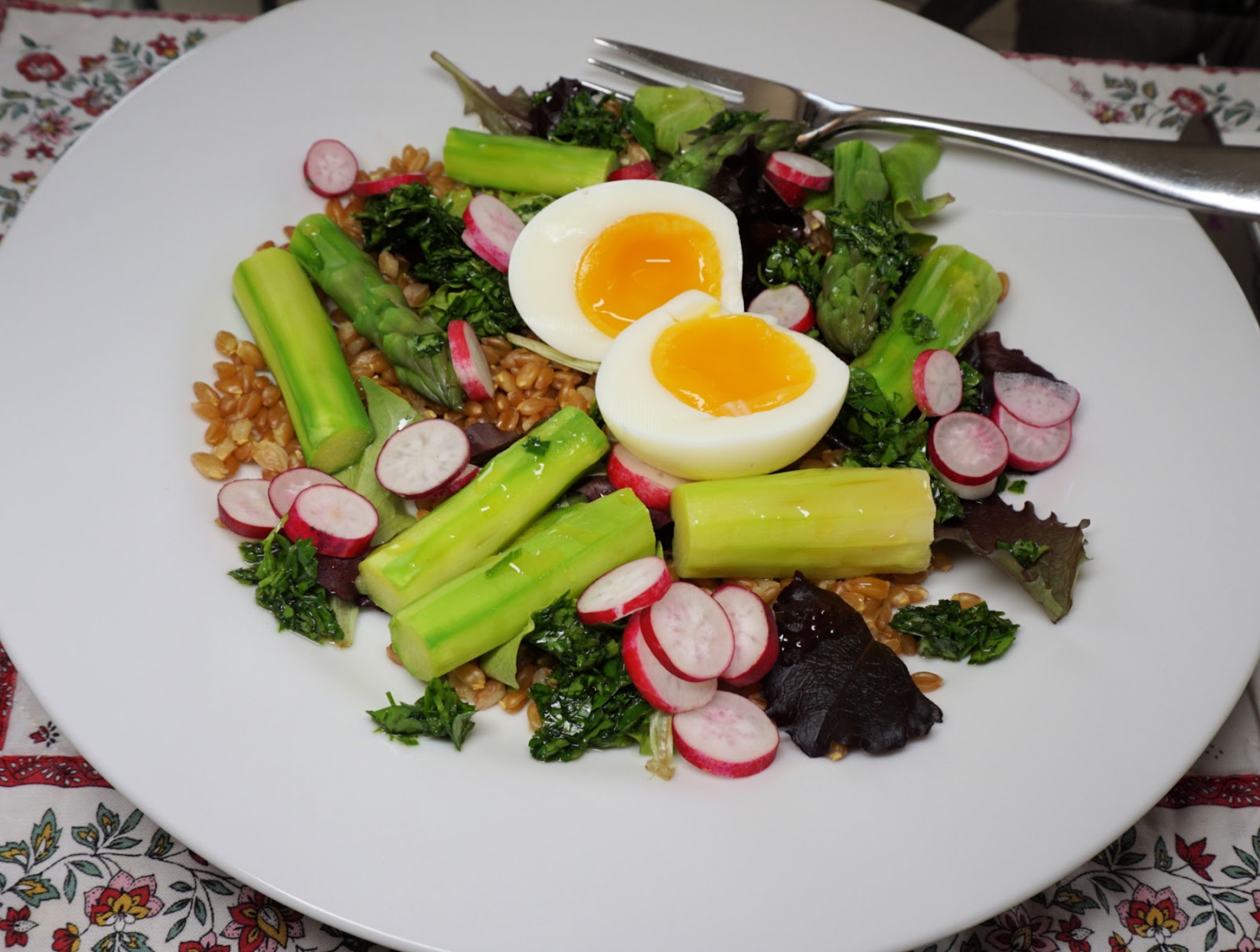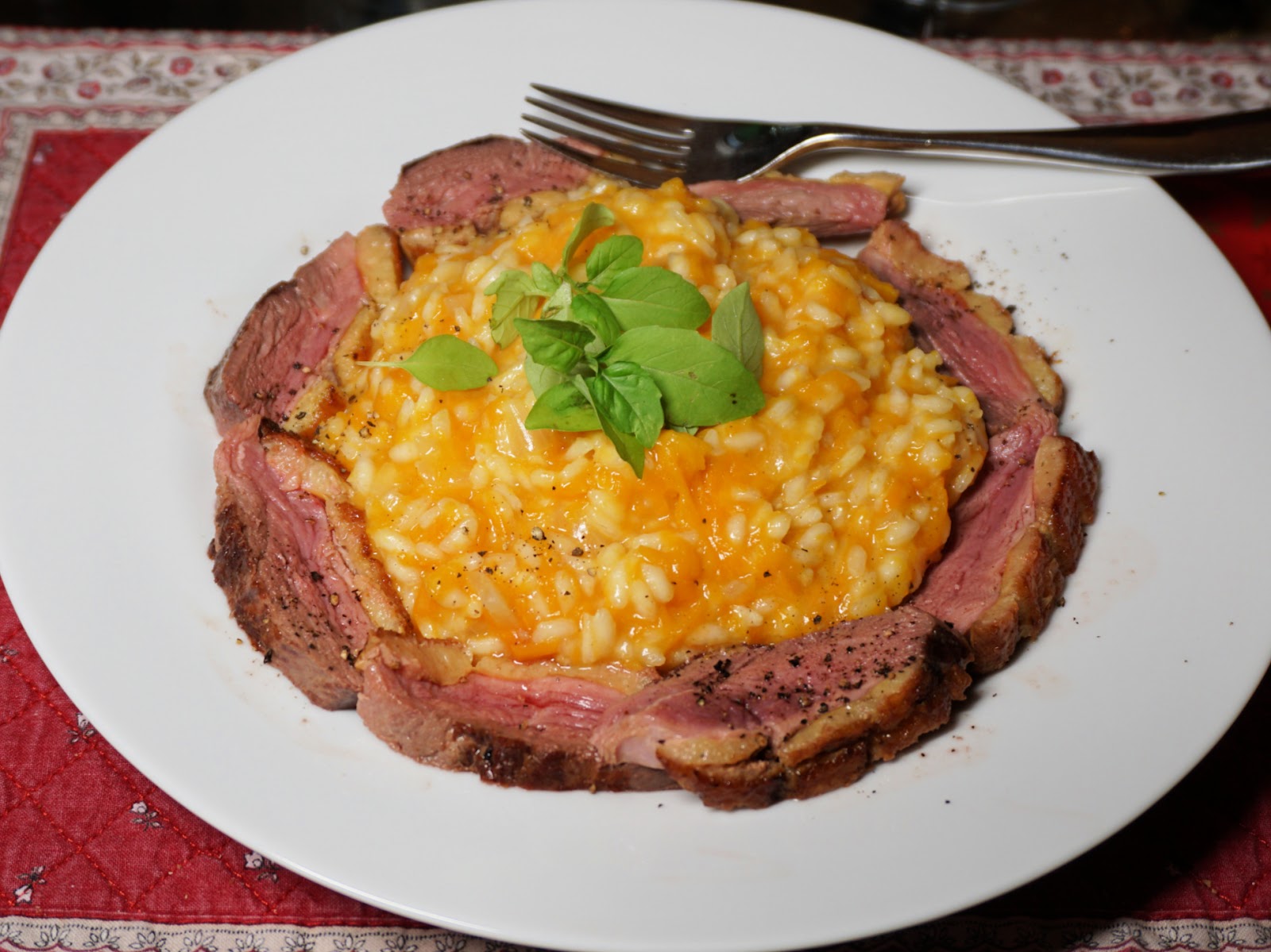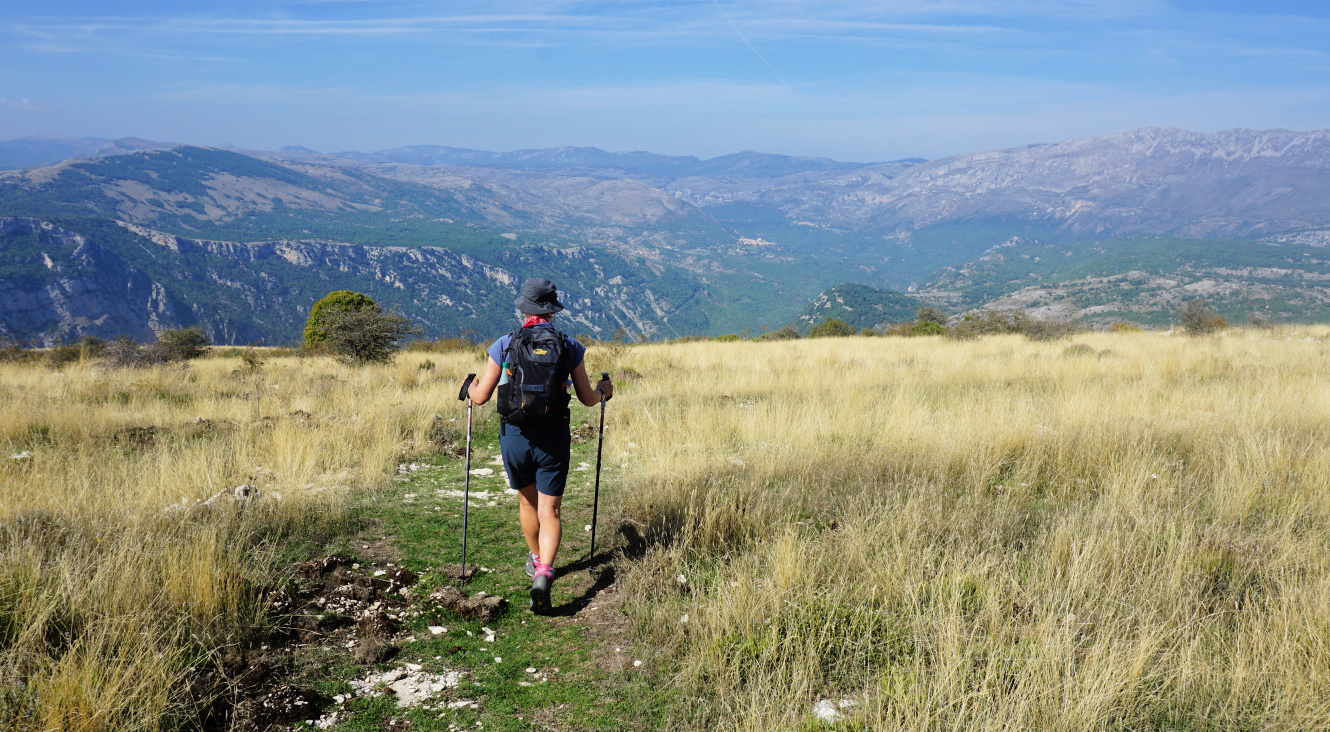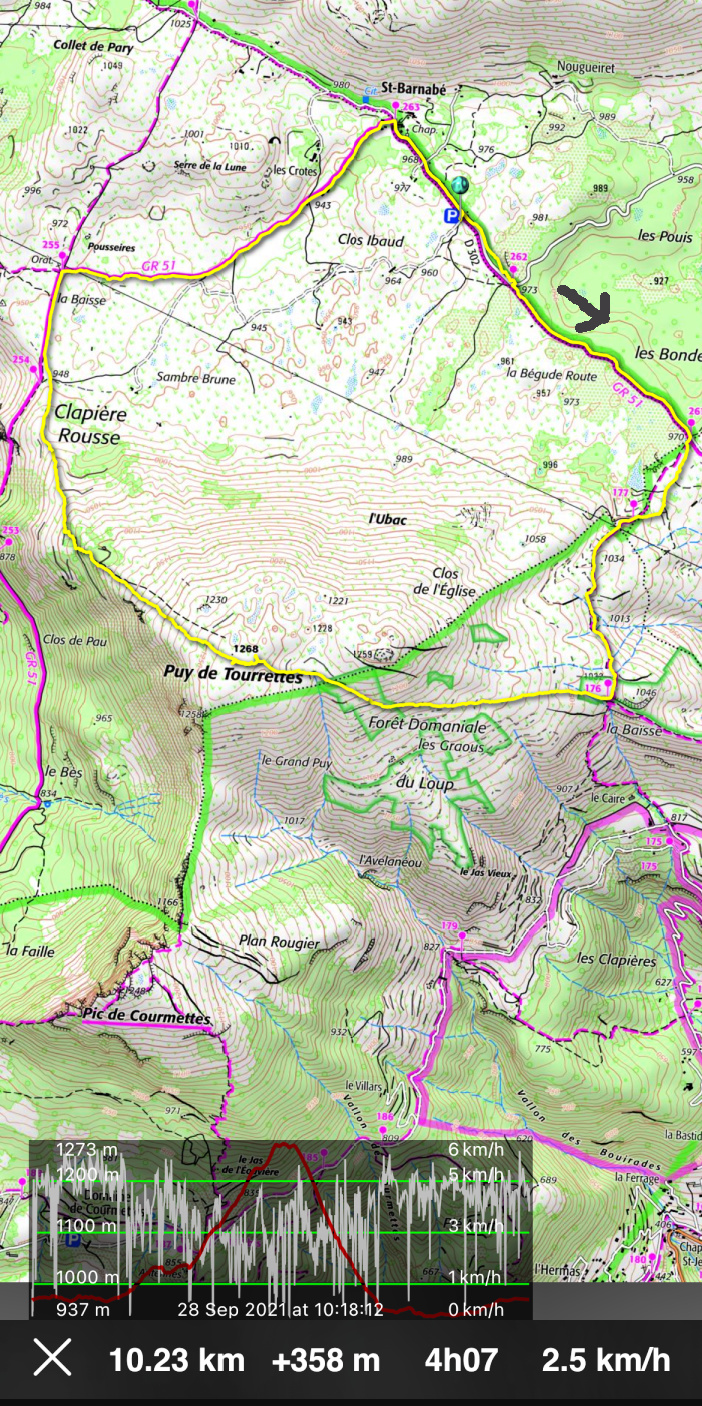Small spelt or einkorn wheat, le petit épeautre, is an ancient grain which was popular in Northern Provençe. It has less gluten and more protein than modern red wheats. Its nutty taste makes it a good base for salads. In France, small spelt can be found in organic shops. It cooks in 45 minutes and can be frozen in batches. This is a tasty spring salad when green asparagus is in season.
2 servings
100 ml small spelt
6 organic green asparagus
A handful of baby salad leaves, mesclun
8- 10 radishes, sliced
2 soft-cooked eggs
A handful of organic parsley
A few basil leaves
Olive oil
Freshly ground black pepper
Vinaigrette of olive oil and red wine vinegar
Cook the small spelt in boiling water for 45 minutes. Drain and set aside to cool.
Peel the asparagus stems, discard the tough ends and chop into about 4 cm long pieces. Microwave about 3 minutes until soft. Set aside to cool.
Cook the eggs for 6 minutes, let cool in cold water and peel.
Wash and slice the radishes.
Wash and dry the parsley. Chop it finely and mix with a little olive oil and black pepper into a purée.
Divide the small spelt on the plates. Top with salad leaves and asparagus. Sprinkle with some vinaigrette and parsley purée. Decorate with radish slices and place a soft- cooked egg in the middle. Sprinkle with some chopped basil.
The following hike runs along familiar trails between Menton and Sospel. It basically features the loop around Mont Razet (posted earlier), but with an extension to Col de Cuore on the Italian border.
The proximity of the coast, relatively easy access, and all-year round hiking options make Col de Castillon (706 m) a popular starting point.
 |
| Col de Castillon parking |
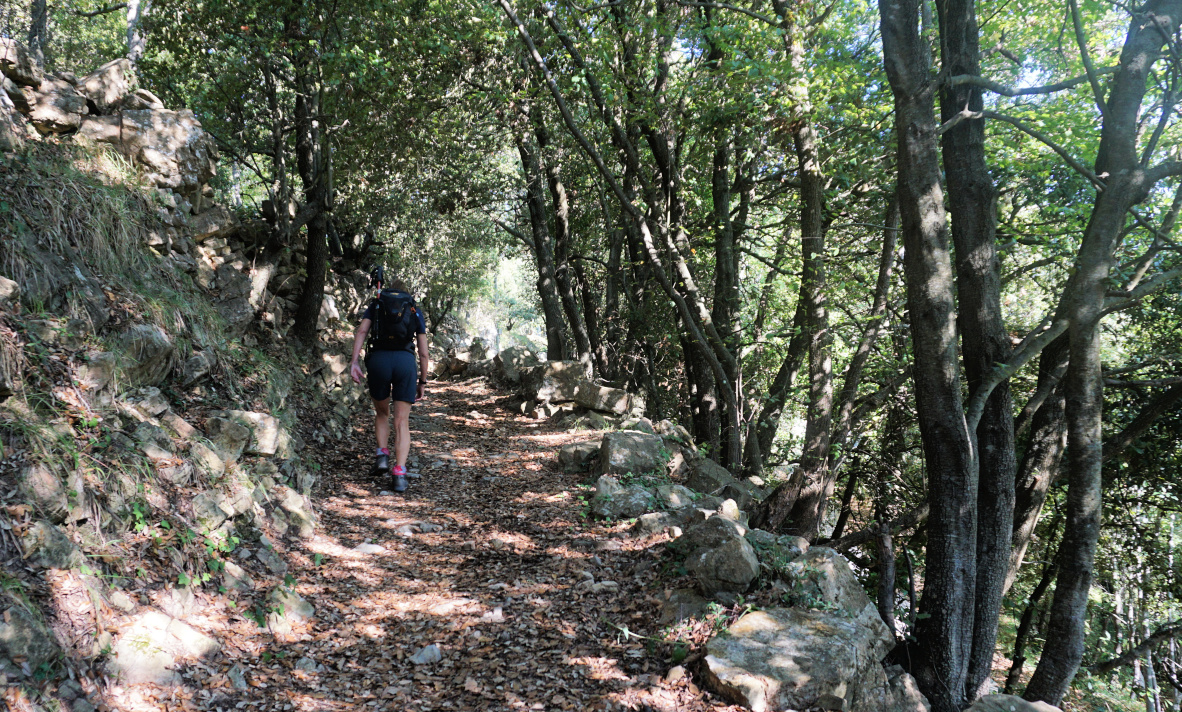 |
| Biatonéa path |
 |
| Trail under Mont Roulabre |
From the vast parking next to the ruined church, we descended a bit to Col de Castillon (signpost #135), then headed straight north towards the Biatonéa neighbourhood, first along a narrow street then a trail, reaching signpost #137 at a crossroads. We took the middle trail, and climbed to Baisse de Scuvion (1154 m; signpost #92) with good views to the west (Mont Ours etc), and to east.
 |
| View from trail before Baisse de Scuvion |
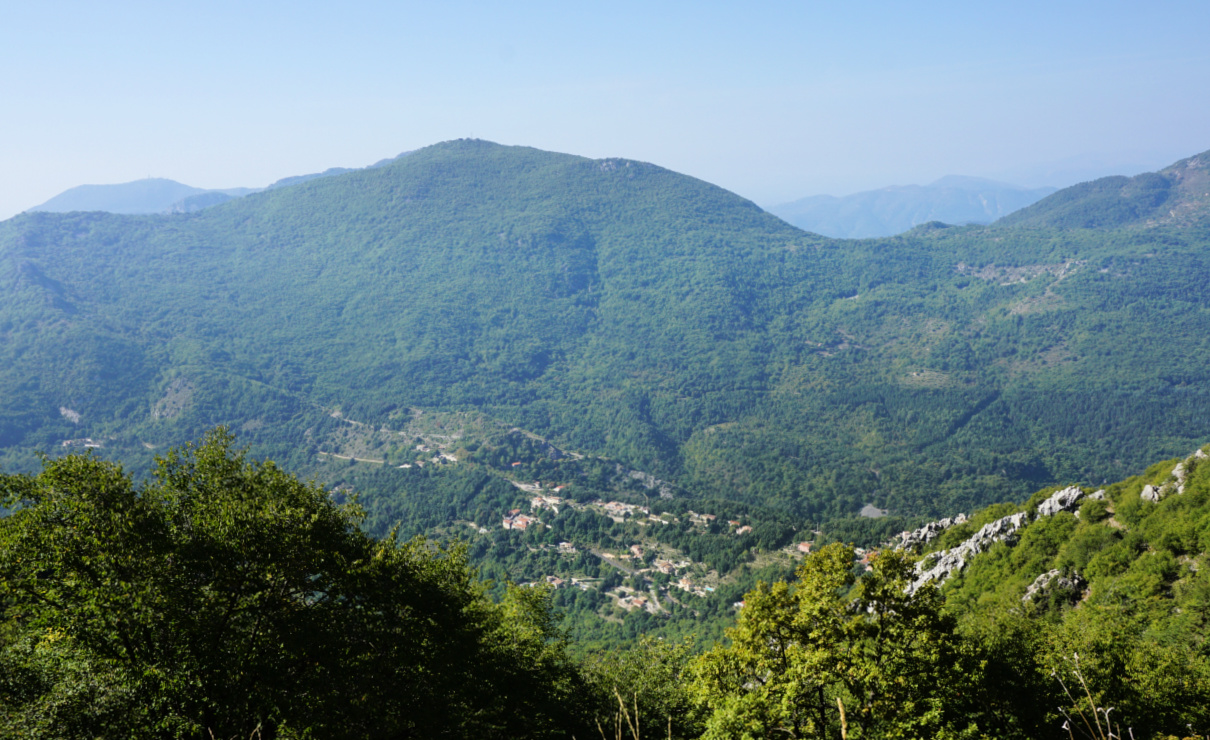 |
| Mont Ours seen from Baisse de Scuvion |
 |
| Baisse de Scuvion |
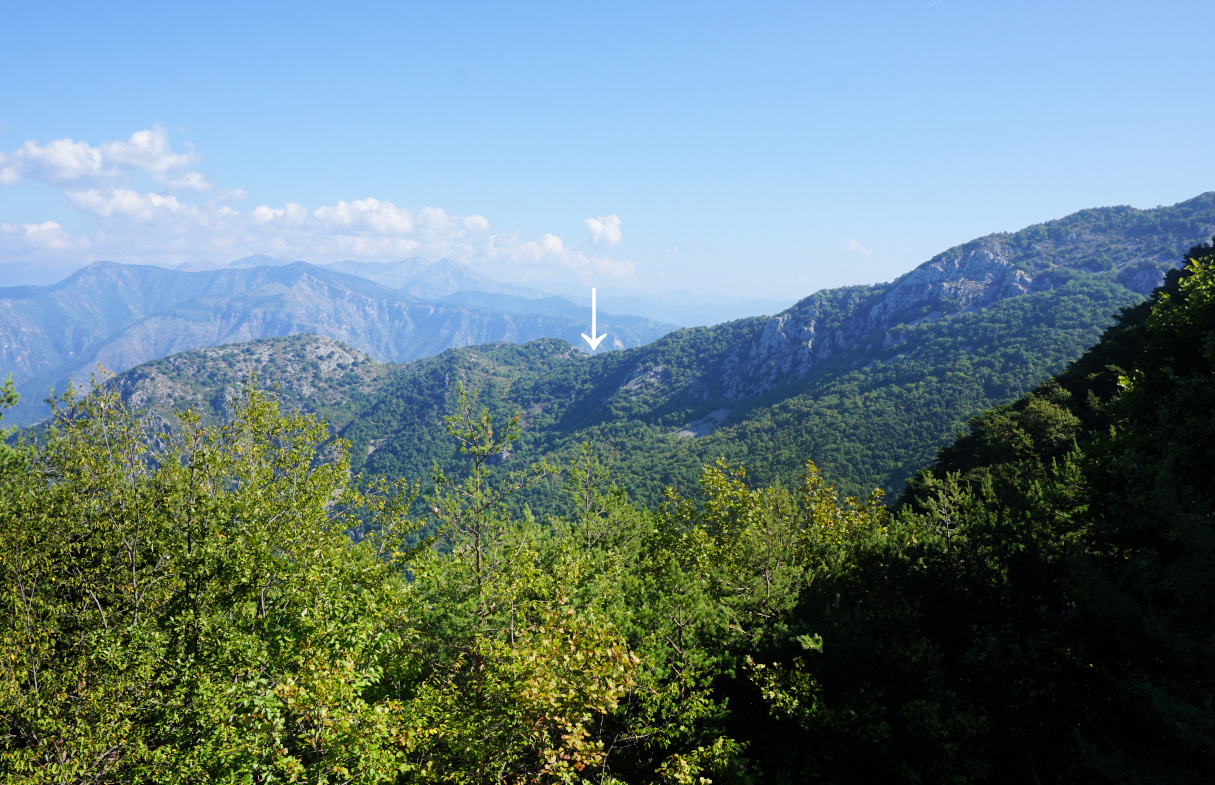 |
| Col de Cuore |
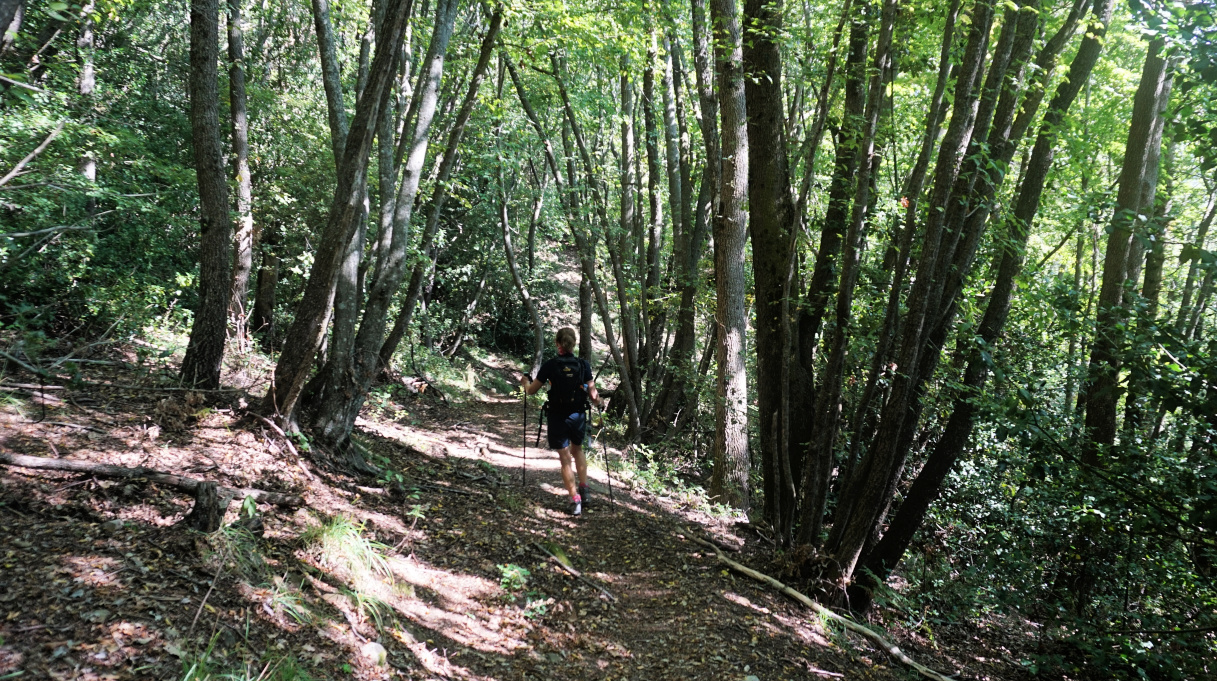 |
| Near Col du Razet |
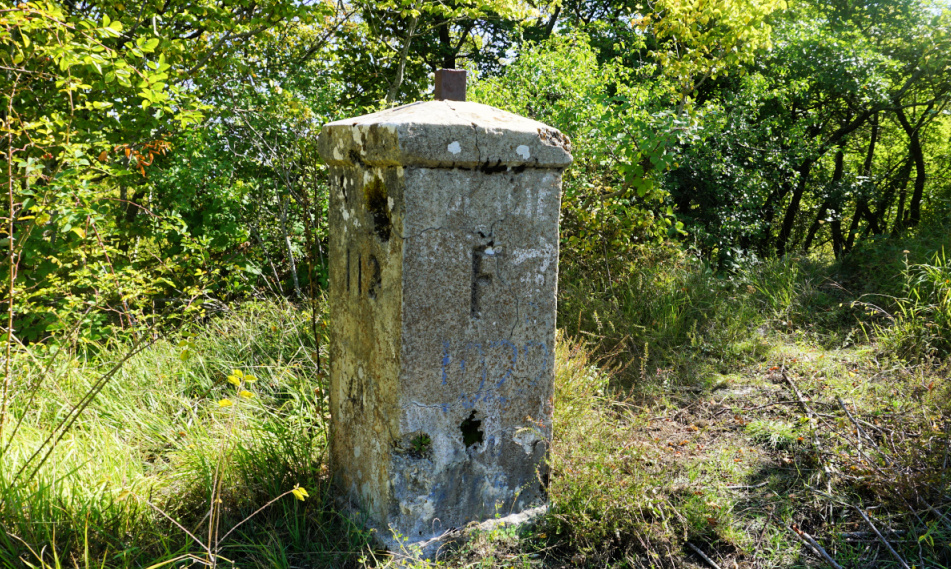 |
| Border post from 1927 |
 |
| La Pierre Pointue |
We descended in the woods along the Northern flank of Mont Razet to Col de Roulabre and Col du Razet (1033 m; signpost #90). Crossing the GR52 trail, we followed the trail northeast then north on the French side of the border. Apart from a few rockslide areas, the trail was good. After a short climb, we reached Col de Cuore with a border post from 1927. We had views down to the Sospel Valley, and Mont Razet while the view to Italy was limited due to the woods and vegetation.
As Col de Cuore marked our turning point today, we returned to Col du Razet, then headed to Pierre Pointue (1168 m; signpost #93a) on the southern side of Mont Razet. We passed remains of several bunkers, then forked left at signpost #93, and descended steeply back to the village via Biatonéa.
Duration: about 5 h active
Map: 3742 OT Nice Menton Côte d’Azur
You can cook this pasta dish in no time if you use peeled and cooked giant shrimp, gambas, which are quickly reheated in the pasta sauce.
For your pasta choose organic wholewheat Italian tagliatelle, such as Delverde, which is cooked in only 5 ¼ minutes according to the information on the package. It is the best tagliatelle that I have ever tasted.
2 servings
Wholewheat organic tagliatelle for two servings
2 tbsp. olive oil
1 shallot, chopped
1 clove garlic, minced
Freshly ground black pepper
Grated lemon zest from ½ organic lemon
Lemon juice from ½ organic lemon
2 tbsp. crème fraîche 15% fat or cream
1 package, about 200 g, cooked and peeled giant shrimp, gambas
A small handful of freshly grated parmesan
Chopped fresh basil
Warm the olive oil over medium- low heat in a frying pan. Add the shallot and garlic and sauté for about 10 minutes until soft but not browned.
Add the lemon zest and juice, crème fraîche and black pepper and stir. Cook for a few minutes. Add the gambas and continue cooking for a couple of minutes until the gambas are reheated.
Meanwhile cook the tagliatelle and drain. Divide the pasta on the plates. Fold in the grated parmesan with a fork, then top the pasta with gambas sauce and decorate with basil.
We had not driven up to Millefonts (2040 m) for a long time. The parking is at the end of a narrow, potholed albeit paved road starting above St-Dalmas Valdeblore, manageable with a normal car.
Our primary goal was Col de Ferrière (2484 m), bordering the Mercantour National Park. We had hiked there some years ago, then looped to Col du Barn and back to the parking.
 |
| View southeast from Millefonts |
 |
| Millefonts parking |
The morning was glorious, with blue skies and little wind. From the parking, we took a shortcut to the GR52 trail and ascended along it to Col de Veillos (2194 m; signpost #83). At the col, we quit the GR trail and headed to Lacs des Millefonts and Col Ferrière along a yellow-marked PR trail in the eastern part of the Millefonts Valley.
We came to Lac Petit (2225 m), in fact the biggest of the Millefonts Lakes. We followed the main trail, heading northwest along a grassy slope. A secondary path circled the lake and continued to one of the upper lakes.
 |
| Near Col de Veillos |
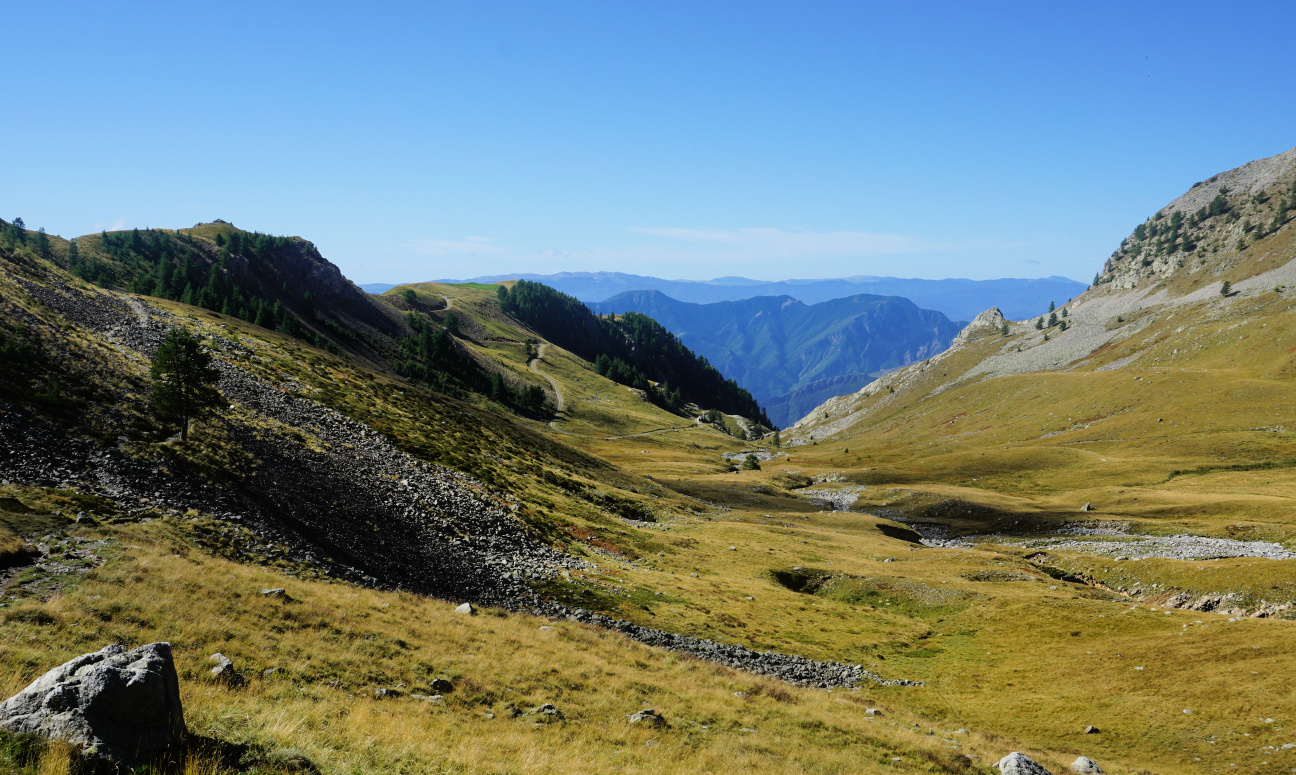 |
| Vallon des Millefonts |
 |
| Lac Petit |
The good morning weather was gone, summits were partly covered with clouds and the wind picked up. Some high cumulonimbus cloud formations were visible. We reached Col Ferrière easily, but decided not to continue to the nearby Cime des Lauses (2651 m). The imposing chain of mountain massifs bordering Italy was still visible under the cloud layers.
We descended a bit to a warmer spot for our picnic then returned back to Millefonts parking.
The hiking area above Millefonts offers several possibilities in a high mountain environment. The summits are reachable in good weather, and it is easy to modify your itinerary when needed.
 |
| Cime des Lauses and Col Ferrière |
 |
| Pépoiri and Lac Petit |
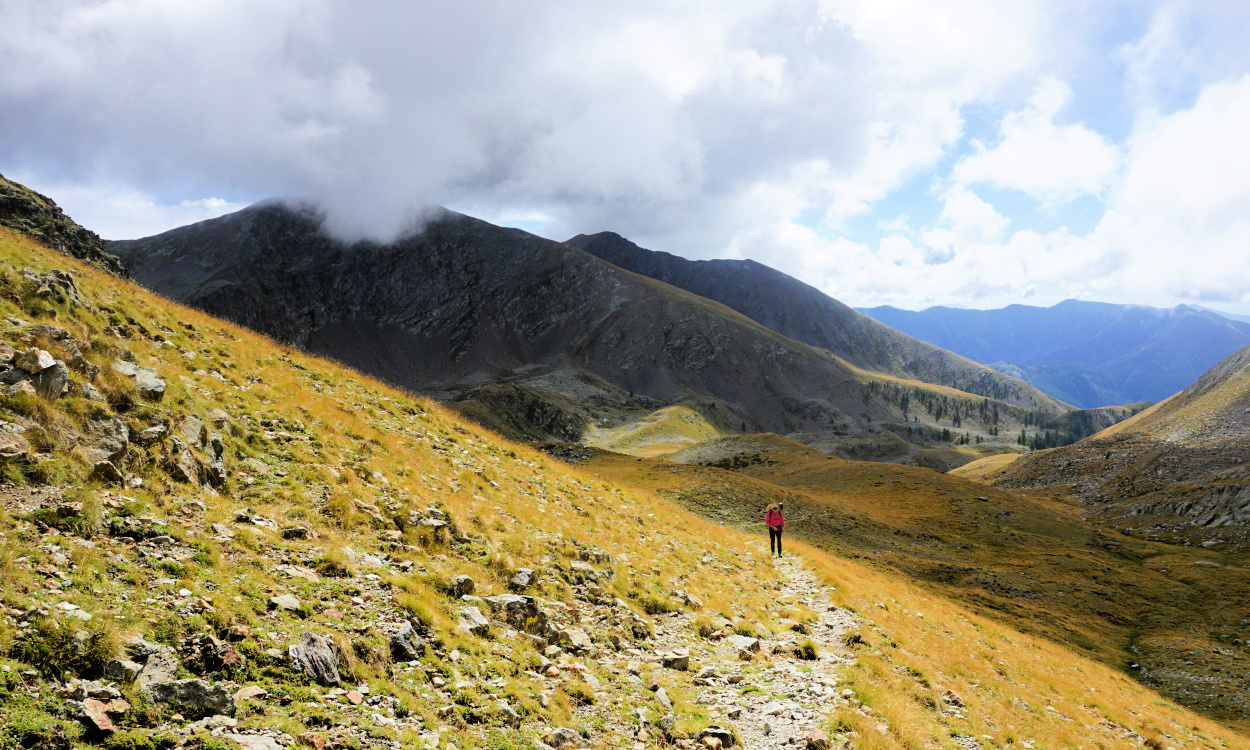 |
| Trail near Col Ferrière |
 |
| Col Ferrière |
 |
| Clouds gathering above Millefonts |
Duration: about 3 h active
Map: Moyenne Tinée 3641 ET
The following risotto recipe is adapted from the wonderful cookery book, The Mediterranean Diet Cookbook, by Nancy Harmon Jenkins. She described having a golden pumpkin risotto in a restaurant in Mantua, Italy, on a late autumn day. She wrote that “the rice shimmered on the plate like a golden harvest moon”. This must have been some time in the 1970’s when the cuisine in small Italian restaurants still was quite local.
I have adapted her recipe for a modern risotto served with duck breast slices or a sliced steak as a main course. The colours will complement each other.
2 servings
2 handfuls of butternut cubes
120 ml risotto rice
½ medium onion, chopped
1 clove garlic, minced
2 tbsp. olive oil
150 ml white wine
500 ml chicken stock (you may not need it all)
A handful of freshly grated parmesan
Freshly ground black pepper
Heat the chicken stock to simmering and keep it warm while preparing the risotto.
In a heavy saucepan, cocotte, warm the olive oil over medium- low heat and gently sauté the onion and garlic until soft, about 5- 10 minutes. Add the butternut cubes and stir until well coated with oil. Cover and cook for about 10 minutes until the butternut is soft enough to be mashed with a fork to almost a purée.
Add the rice and stir to mix well. Increase the heat to medium and pour in half the wine. Keep stirring and as soon as the rice has absorbed the wine, add the rest. Then continue stirring and adding the chicken stock, ladle by ladle. The rice is done in about 25 minutes. It should be al dente, with a bit of a bite in the centre. The risotto should be thick enough to be eaten with a fork and the butternut sauce should be dense and brilliant yellow.
When the rice is done, remove the cocotte from heat and stir in the cheese and some black pepper. Divide the risotto on the plates and surround with duck breast or steak slices.
We had previously hiked from Estenc to Col de Boucharde and Col de la Cayolle; it was an excellent loop in the upper Var River Valley. This time we wanted to explore the trail to Col de Sanguinière (2601 m), using the same starting point by the D2202 road just north of the hamlet of Estenc.
 |
| Trail start above Estenc |
 |
| Trail to Cabanes de Sanguinière |
 |
| Cabane de Sanguinière |
 |
| Above tree line to Col de Sanguinière |
 |
| Rocky trail near Col de Sanguinière |
 |
| Col de Sanguinière |
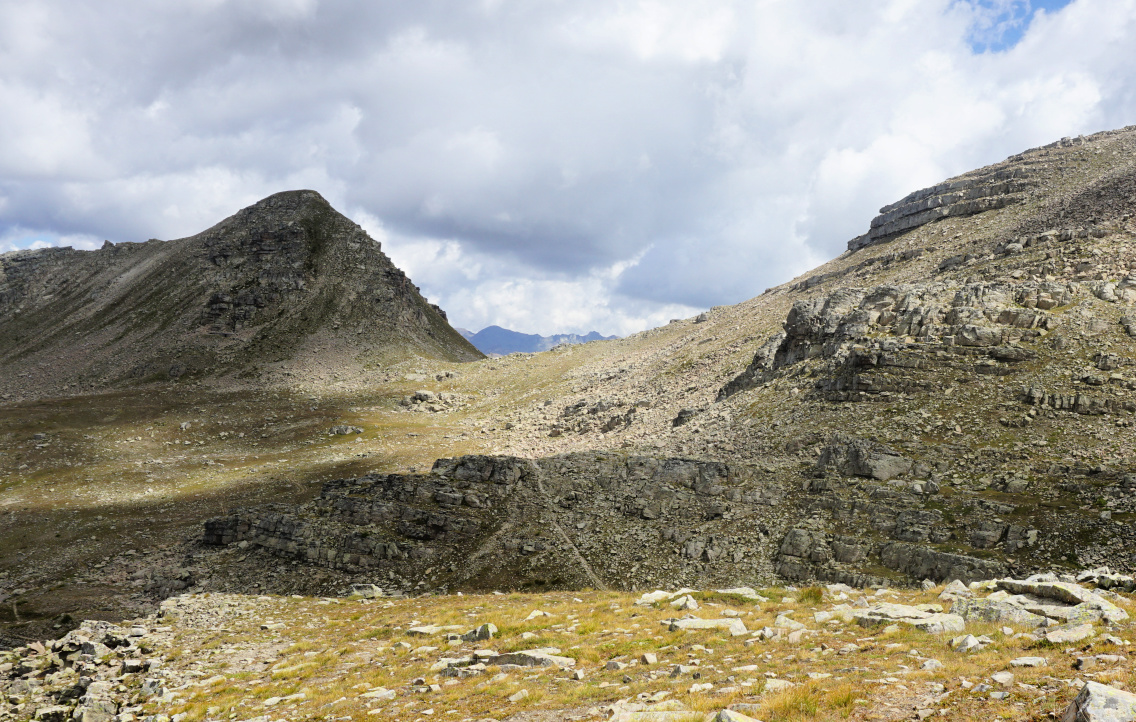 |
| Col de Braïssa seen from Col de Sanguinière |
 |
| View south from Col de Sanguinière |
 |
| Descent from Col de Sanguinière |
From signpost #284 (1870 m elev.) next to the parking, we entered the Mercantour National Parc, and climbed northeast. We crossed the D2202 road twice (signposts #285, 286), and continued in the woods to Cabanes de Sanguinière (2049 m). Soon after the huts and a clearing, we reached a crossroads at signpost #287 (2072 m). We continued straight, still in the woods, following the Sanguinière Stream along a nice and soft trail. We crossed a wooden bridge, passed signpost #288 and started to ascend more steeply along the southwestern flank of Tête de Sanguinière, the summit east of the homonymous col.
Above 2300 m elevation the forest was gradually replaced by a rugged high alpine scenery, and the trail became much rockier. We saw the mountain pass in front of us, but the marked trail had to make extra loops due to huge boulders south of the col.
From the col, on the opposite side, we had a view of the wide Vallon de Sanguinière, Col de la Braïssa, and the row of peaks south of Col de la Bonette. The atmosphere was tranquil but sauvage, just the screams of marmots broke the silence from time to time.
We returned along the same trail.
Duration: 5h 20 active time

The following tasty sauté is perfect to make in autumn and winter when the butternuts and pumpkins are in season.
2 servings
2 small organic chicken breasts without skin and bone
½ small butternut squash
2 tbsp. olive oil
1 small onion, chopped
1 clove garlic, minced
2 tbsp. grainy mustard, moutarde à l’ancienne
2 tbsp. crème fraîche, 15% fat
½ tsp. cinnamon powder
Freshly ground black pepper
Chopped fresh herbs
Cut the chicken breasts into about 2,5 cm x 2,5 cm cubes. Peel the ½ butternut and cut into cubes about the same size as chicken cubes. Microwave the butternut cubes for 3- 4 minutes until half-cooked.
Warm the olive oil in a frying pan over medium heat and sauté the chicken and butternut cubes on all sides for 10 minutes. Stir now and again. Add the onion and garlic and continue cooking and stirring for 10 minutes.
In a bowl, whisk together the créme fraîche, mustard, and cinnamon powder. Pour the mixture into the pan and stir. Grind over some black pepper. Reduce the heat, cover and simmer for 5- 10 minutes.
Serve with brown rice or rice mixture and decorate with chopped fresh herbs.
We have hiked up to Puy de Tourrettes (1268 m) many times, and written a few blogposts featuring different itineraries.
Because of its elevation (970 m), the parking on the St-Barnabé plateau is a tempting starting point to explore the surroundings. It should be added that marked routes to the Puy de Tourrettes summit have been removed from new maps and some guides.
The terrain is not restricted but seems to be often used by sheep farmers.
 |
| Start along GR51 signpost#262 |
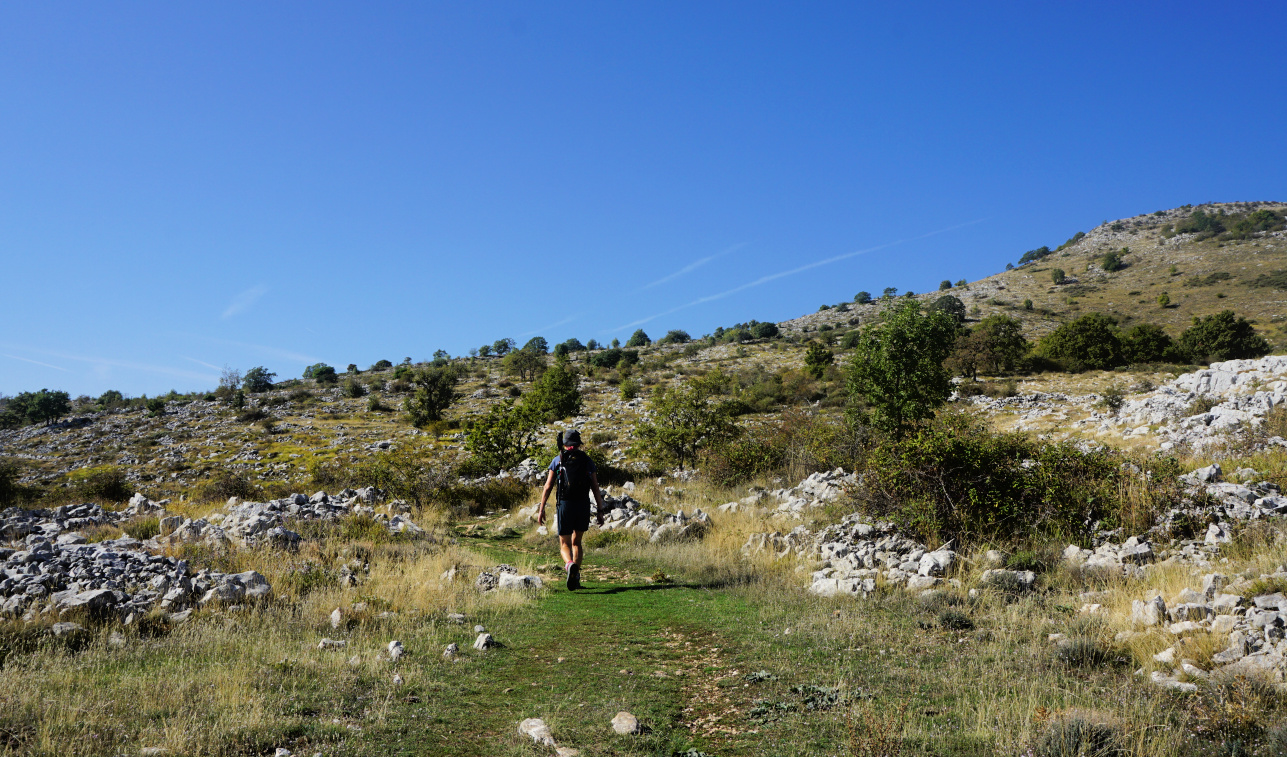 |
| Between signposts #167 #177 |
 |
| Puy de Tourrettes eastern flank |
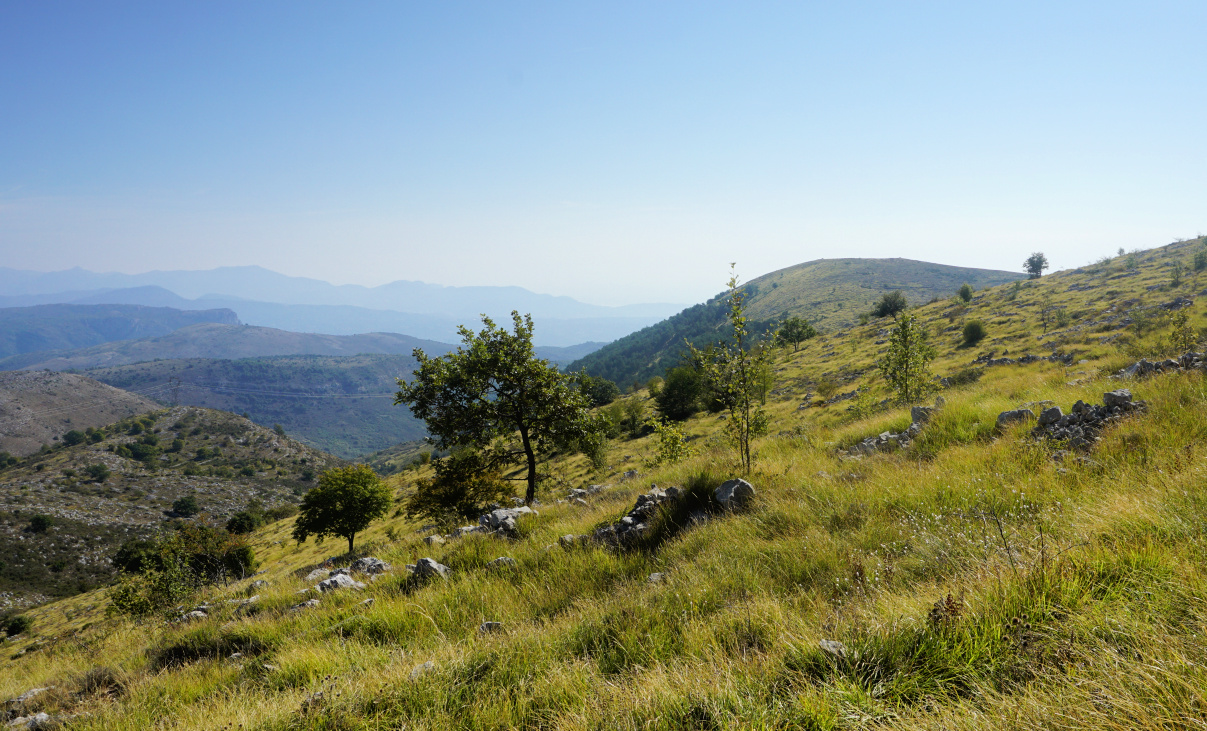 |
| Puy de Naouri seen from trail |
From the parking, we followed the GR51 southeast (almost flat) to signpost #261 where we forked right, heading south. We reached la Baïsse (signpost #176) above le Caïre. We forked right(west) and started to ascend along a good albeit unmarked path which took us directly to the flat summit marked with a big cairn.
 |
| Pic de Courmettes seen from trail |
 |
| Puy de Tourrettes summit |
 |
| Descending to Plateau St-Barnabé |
 |
| Oratory by GR51 trail St-Barnabé |
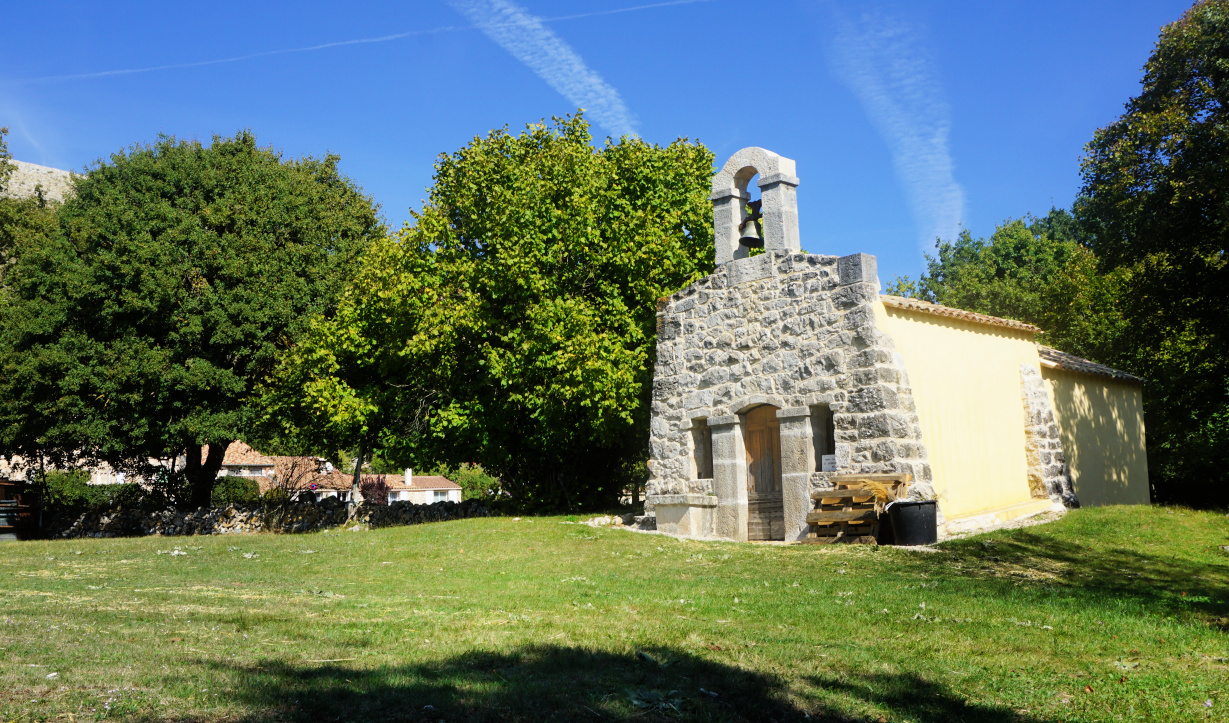 |
| Chapel in St-Barnabé |
The trail continued along the bare north western flank, and we descended along it passing Clapière Rousse and some pine woods. We came back to GR51, walked to signpost #255 and an oratory where we forked right again, and still on the GR51, headed first to the hamlet of St-Barnabé then back to our starting point.
Map: 3643 ET Cannes Grasse Côte d’Azur


